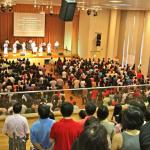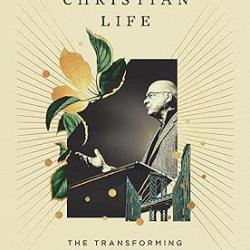This post is part of a series walking through the first volume of Abraham Kuyper’s Common Grace.
Note: If you’re the podcast-listening type, there is a recent episode on Christ the Center that discusses this book specifically and the series more broadly. You can find it here.
Summarizing everything he’s said so far about Genesis 1-3, Kuyper draws two broad conclusions:
- Death would consume us all, were man left to himself;
- God’s grace immediately and continually restrains death and temporarily softens the effects of the curse. (324)
From this point, we move on to the ‘Noahic Era,’ about which we know very little. In fact, the 1600 years between Adam and Noah is for all intents and purposes a blank. And yet, we still know the human condition was different from both the condition of mankind in Paradise and from that of mankind after the Flood in three ways:
- God’s Spirit strove with man differently, possibly meaning more harshly than He does now? (Genesis 6:3)
- The world settled into regular patterns. (Genesis 8:22) This doesn’t mean that there was no natural order prior to this.
- When we contrast Genesis 6:4 with Genesis 8:21, we see the implication that man was totally evil prior to the Flood and that after man was born evil but restrained.
This stretch of time was not the result of ‘trial and error’ on God’s part–however much God’s being ‘grieved’ (Genesis 6:6) may superficially make it sound that way.
This period shows us the poison in our hearts and the strength and value of common grace–which applies to the whole world and which we know through God’s Word.
This period also highlights saving grace by contrasting Seth and Cain–the latter whom would have been utterly degraded and consumed by sin if not for God’s intervention.
We also see that post-Flood common grace must have been different, otherwise Shem, Ham, and Japeth would have ended like Cain, Abel, and Seth. So the Flood, like baptism, separates grace from depravity.
To summarize, Kuyper outlines three stages of grace after the Fall:
- Common grace is introduced, sparing Adam–and all his descendants–from instant death under the curse.
- Post-Flood common grace is introduced, restraining evil as well.
- Particular grace.
Before the Flood, Kuyper argues that common grace was strong physically (long physical lives) and weak spiritually (the spread of wickedness on the part of man). After the Flood it is stronger spiritually (relative to the pre-Flood state) and sort-of weaker physically (in that we have shorter life-spans, though over time things like technology and medicine give our lives higher qualities). The shorter life span is a part of the way common grace protects us spiritually: we have fewer opportunities to sin and less time to get stuck in wicked habits.
In fact, Kuyper argues that sin was so much less restrained from Adam to Noah that people became so wicked ‘extermination’ was the only solution. (332) This gives us a picture of what our societies would be like without common grace.
Still, we have to ask just what God was doing in this time? Frankly, we don’t know. It may be that population growth was one aspect of the Divine plan–long life-spans certainly would have helped with that. And yet, there were at least few enough people that Noah was able to preach to them.
Socially, they seem to have lived as clans under patriarchs in a cluster of close sttlements. This raises the question of why the population didn’t explode. If Genesis 8 is a change from the state of the world prior to the Flood, then
- irregular nature and natural disasters (cf Genesis 8:22)
- wild animals eating people (Cf. Genesis 9:2)
- the lack of restraint in human sin
All these may have worked together to keep the population down.
During this time we also see some technological innovation–especially from Cain’s line. Iron, musical instruments, and tents are all invented. Which shows us that even then common grace was somewhat at work in the world. Kuyper points out that the fact that Ark Construction was a possibility shows how far technical skill must have advanced.
“When we connect this to the undeniable fact that in the subsequent history of humanity, the development of the natural side of human life has generally come not from pious people but rather from unbelievers, then this phenomenon seems to manifest an ordinance governing the entire course of common grace.” (337)
There was also some kind of corporate worship begun under Enosh. Kuyper suggests that this was some combination of common and particular grace–though again we lack much in the way of details.
Finally, we see something of particular grace at work in the life and (non?) death of Enoch. His short-lived walk with God shows us that even here God was working to save His people. This particular grace flows together with common grace in the ark, while Cain’s line is judged and destroyed. (339)
Dr. Coyle Neal is co-host of the City of Man Podcast and an Associate Professor of Political Science at Southwest Baptist University in Bolivar, MO













